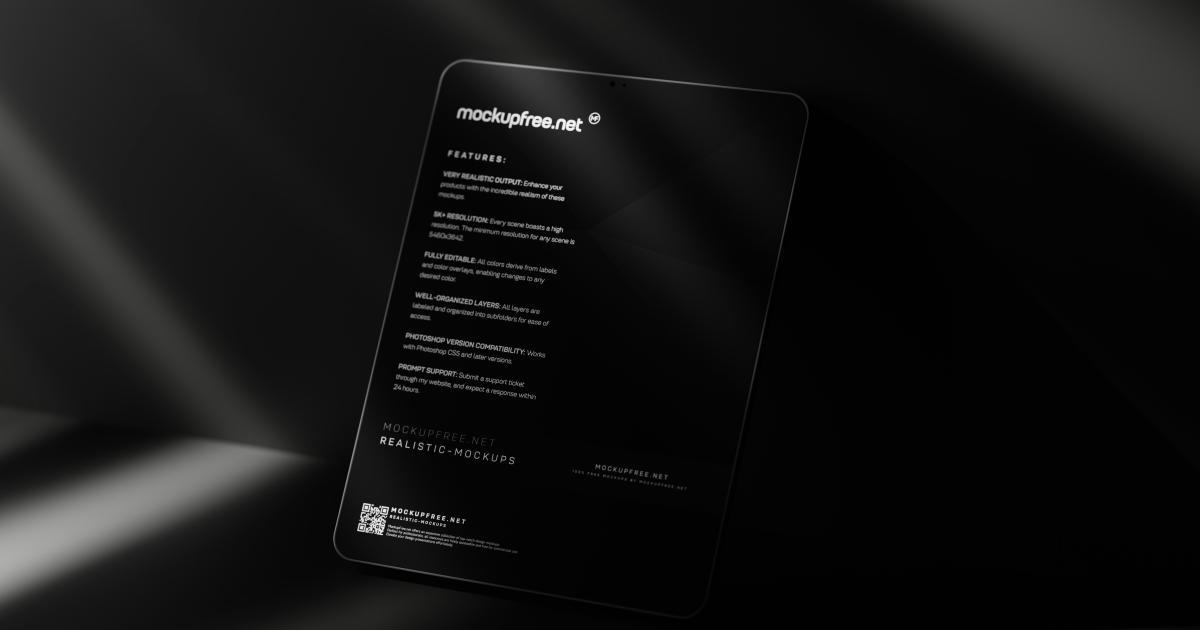Unlock the Amazing Power of Progressive Web Apps


In today's digital landscape, where user experience is paramount, the rise of Progressive Web Apps (PWAs) has transformed the way we interact with web-based applications. These innovative hybrid solutions blend the best features of traditional websites and mobile apps, offering an unparalleled user experience that transcends the boundaries of traditional web development.
The Emergence of Progressive Web Apps
Progressive Web Apps are a new class of web applications that leverage modern web capabilities to deliver an app-like experience to users. Blending the accessibility and universal reach of the web with the functionality and responsiveness of native mobile apps, PWAs have emerged as a game-changing solution for businesses and developers alike.
Defining Progressive Web Apps
At their core, Progressive Web Apps are web applications that are designed to provide a seamless, app-like experience to users. They leverage a combination of modern web technologies, including Service Workers, App Manifests, and Push Notifications, to offer features such as offline access, instant loading, and push-based updates.

Unlike traditional websites, which rely on a constant internet connection and page refreshes, PWAs are built to be resilient, fast, and engaging, even in low-connectivity environments. They can be installed on a user's device, just like a native mobile app, and provide access to device-specific features, such as camera, geolocation, and push notifications.
The Evolution of Web Development
The rise of Progressive Web Apps is a direct response to the evolving needs and expectations of users. As the line between web and mobile experiences continues to blur, there has been a growing demand for web-based applications that can deliver the same level of performance, functionality, and engagement as their native counterparts.

Traditional web development, with its emphasis on static content and page-based navigation, has given way to a more dynamic and interactive approach. PWAs embody this shift, enabling developers to create web-based experiences that are highly responsive, capable, and accessible across a wide range of devices and platforms.
The Benefits of Progressive Web Apps
Progressive Web Apps offer a comprehensive set of benefits that address the pain points of both users and businesses. By combining the strengths of the web and native mobile apps, PWAs provide a compelling solution that can unlock new opportunities and drive growth.
Improved User Experience
At the heart of the Progressive Web App revolution is the user experience. PWAs are designed to provide a seamless, app-like interaction that feels natural and intuitive to users. From instant loading times to smooth animations and offline access, PWAs prioritize user engagement and satisfaction.

By leveraging technologies like Service Workers, PWAs can cache critical assets and provide a responsive, reliable experience, even in low-connectivity or offline environments. This ensures that users can continue to interact with the application without interruption, ultimately leading to higher engagement and customer satisfaction.
Enhanced Accessibility and Reach
One of the key advantages of Progressive Web Apps is their universal accessibility. As web-based applications, PWAs can be accessed through any device with a web browser, without the need for platform-specific app stores or downloads.

This cross-platform compatibility empowers businesses to reach a wider audience, regardless of the user's device or operating system. PWAs also provide an opportunity to bridge the gap between mobile web and native app experiences, ensuring that users can access the same level of functionality and engagement across all their devices.
Increased Engagement and Conversion Rates
By offering a seamless, app-like experience, Progressive Web Apps have been shown to drive significant improvements in user engagement and conversion rates. The ability to provide instant loading, offline access, and push notifications helps to keep users engaged and coming back.

Moreover, the installation process for PWAs is typically faster and more streamlined than traditional mobile app downloads, reducing friction and making it easier for users to access the application. This can lead to higher adoption rates and increased customer loyalty over time.
Cost-Effective Development and Maintenance
Developing and maintaining a separate mobile app can be a significant investment for businesses, both in terms of time and resources. Progressive Web Apps offer a more cost-effective alternative, as they can be built using the same web technologies and skills that teams already possess.

By leveraging a single codebase for both web and mobile experiences, PWAs reduce the need for platform-specific development and maintenance. This streamlined approach can lead to significant cost savings, allowing businesses to allocate their resources more efficiently and focus on delivering exceptional user experiences.
Improved SEO and Discoverability
Unlike native mobile apps, which can be difficult to discover through traditional search engines, Progressive Web Apps are inherently optimized for search engine visibility. By leveraging web-based technologies, PWAs can be indexed and ranked just like any other website, making them more discoverable to potential customers.

Additionally, PWAs can take advantage of search engine optimization (SEO) best practices, such as fast loading times, mobile-friendliness, and rich metadata, to improve their online presence and attract more organic traffic. This increased discoverability can be a significant advantage for businesses looking to expand their reach and acquire new customers.
Building Successful Progressive Web Apps
Developing a successful Progressive Web App requires a strategic approach that considers both the technical and user-centric aspects of the application. By following best practices and leveraging the right tools and frameworks, businesses can unlock the full potential of PWAs and deliver exceptional experiences to their customers.
Defining the PWA Roadmap
The first step in building a successful Progressive Web App is to define a clear roadmap that aligns with your business objectives and user needs. This involves identifying the key features and functionalities that will provide the most value to your target audience, as well as determining the technical requirements and implementation timeline.

During this planning stage, it's crucial to consider factors such as the user's device capabilities, connectivity, and expected usage patterns. This will help you prioritize the core PWA features, such as offline access, push notifications, and app-like UI, to ensure a seamless and engaging experience.
Leveraging the PWA Core Technologies
At the heart of a Progressive Web App are several core technologies that work together to deliver the desired user experience. These include:
Service Workers: Service Workers are a crucial component of PWAs, as they enable features like offline access, background sync, and push notifications.
App Manifest: The App Manifest provides metadata about the PWA, such as the app name, icons, and display settings, which are used to create an app-like installation experience.
Push Notifications: Push Notifications allow PWAs to engage users with timely updates and relevant information, even when the application is not actively being used.
Web APIs: PWAs leverage a variety of Web APIs, such as the Geolocation API, Bluetooth API, and Camera API, to integrate with device-specific features and provide a more native-like experience.

By understanding and effectively implementing these core technologies, developers can create PWAs that are fast, reliable, and engaging, while also providing a seamless installation and offline experience for users.
Optimizing for Performance and Responsiveness
One of the key priorities in building a successful Progressive Web App is ensuring optimal performance and responsiveness. PWAs are designed to deliver instant loading times and smooth interactions, even in low-connectivity environments.

To achieve this, developers must focus on strategies such as code splitting, asset caching, and lazy loading, which can significantly improve the initial load time and overall responsiveness of the application. Additionally, the use of modern web development frameworks and libraries, such as React, Angular, or Vue.js, can simplify the implementation of PWA features and provide a solid foundation for building high-performance web applications.
Delivering a Consistent, Cross-Platform Experience
Progressive Web Apps are designed to be accessible across a wide range of devices and platforms, from desktop computers to mobile phones. Ensuring a consistent and seamless user experience across these different environments is crucial for the success of a PWA.

This requires a responsive design approach, where the application's layout, functionality, and user interface adapt to the user's device and screen size. Additionally, developers should consider implementing features like offline access, push notifications, and app-like installation, which provide a similar level of engagement and functionality regardless of the user's device or platform.
Iterating and Continuously Improving
Building a successful Progressive Web App is an iterative process that involves continuous improvement and user feedback. As user needs and technology evolve, it's essential to regularly review and update the PWA to ensure it remains relevant, engaging, and optimized for performance.

This includes monitoring user behavior, gathering feedback, and making data-driven decisions to enhance the PWA's features, functionality, and overall user experience. By adopting a user-centric and agile approach to PWA development, businesses can stay ahead of the curve and deliver exceptional experiences that keep their customers engaged and loyal.
Real-World Examples of Successful Progressive Web Apps
The power of Progressive Web Apps has been demonstrated by numerous successful case studies across various industries. Let's explore a few examples that showcase the transformative impact of PWAs.
Starbucks: Enhancing Customer Engagement and Loyalty
Starbucks, the global coffee giant, recognized the importance of providing a seamless and engaging mobile experience for its customers. By developing a Progressive Web App, Starbucks was able to enhance its customer engagement and loyalty, leading to impressive results.

The Starbucks PWA delivers a fast, responsive, and feature-rich experience, allowing customers to easily browse the menu, order their favorite drinks, and manage their rewards program. By leveraging offline capabilities and push notifications, the PWA keeps users engaged and informed, even when they're not actively using the application.
The results speak for themselves: the Starbucks PWA saw a 2x increase in mobile web traffic and a 75% increase in customer engagement, demonstrating the power of PWAs to drive business growth and customer loyalty.
Trivago: Driving Increased Conversion Rates
Trivago, the popular hotel booking platform, faced the challenge of providing a seamless experience for its mobile web users. By transitioning to a Progressive Web App, Trivago was able to address this challenge and achieve remarkable results.

The Trivago PWA offers a fast, reliable, and engaging user experience, with features like instant loading, offline access, and a mobile-optimized interface. This improved user experience led to a 97% increase in conversions, as well as a 67% reduction in bounce rates compared to the previous mobile website.
By embracing the power of Progressive Web Apps, Trivago was able to bridge the gap between its mobile web and native app experiences, ultimately driving greater customer satisfaction and business success.
Debenhams: Boosting Mobile Engagement and Revenue
Debenhams, a leading UK-based department store, recognized the need to enhance its mobile customer experience. The company's decision to develop a Progressive Web App proved to be a game-changer.

The Debenhams PWA provided a seamless, app-like experience for mobile users, with features like instant loading, offline access, and push notifications. This improved user experience led to a 40% increase in mobile conversions and a 20% increase in revenue generated from the mobile channel.
Additionally, the Debenhams PWA saw a significant reduction in bounce rates, as well as an increase in customer engagement and time spent on the platform. These impressive results demonstrate the transformative impact that Progressive Web Apps can have on businesses, especially in the retail and e-commerce sectors.
The Future of Progressive Web Apps
As the web continues to evolve, the role of Progressive Web Apps in the digital landscape is poised to become even more prominent. With ongoing advancements in web technologies and the growing user demand for seamless, app-like experiences, the future of PWAs looks bright.
Continued Adoption and Integration
The adoption of Progressive Web Apps is expected to continue its upward trajectory, as more businesses and developers recognize the benefits they offer. As PWAs become more widely adopted, we can anticipate increased integration with other emerging technologies, such as Augmented Reality (AR), Virtual Reality (VR), and the Internet of Things (IoT).

This integration will enable PWAs to provide even more immersive and contextual experiences, blurring the lines between the digital and physical worlds. As users demand more personalized and connected experiences, PWAs will play a crucial role in delivering these innovative solutions.
Advancements in Web Capabilities
The ongoing evolution of web technologies will continue to expand the capabilities of Progressive Web Apps. Emerging Web APIs, such as the Intersection Observer API, the Payment Request API, and the Web Bluetooth API, will empower PWAs to integrate with a wider range of device features and provide users with more seamless, native-like experiences.

Furthermore, the integration of technologies like WebAssembly and Web Assembly Modules will enhance the performance and efficiency of PWAs, enabling them to handle more complex computations and deliver even more responsive and engaging experiences.
Increased Collaboration and Standardization
As the Progressive Web App ecosystem matures, we can expect to see increased collaboration among browser vendors, web standards bodies, and the broader developer community. This collaboration will lead to the establishment of more robust and consistent standards, ensuring that PWAs can be reliably developed and deployed across different platforms and browsers.

The continued standardization of PWA technologies and best practices will make it easier for developers to build and maintain high-quality Progressive Web Apps, further driving the adoption and success of this transformative approach to web development.
Conclusion
Progressive Web Apps have emerged as a game-changing solution in the world of web development, bridging the gap between traditional websites and native mobile applications. By leveraging the power of modern web technologies, PWAs offer a comprehensive set of benefits that cater to the evolving needs and expectations of users.
From improved user experiences and enhanced accessibility to increased engagement and cost-effective development, the advantages of Progressive Web Apps are undeniable. As more businesses and developers embrace this transformative approach, the future of the web is poised to become even more dynamic, responsive, and user-centric.
By unlocking the amazing power of Progressive Web Apps, organizations can stay ahead of the curve, deliver exceptional experiences, and drive sustainable growth in the ever-evolving digital landscape.